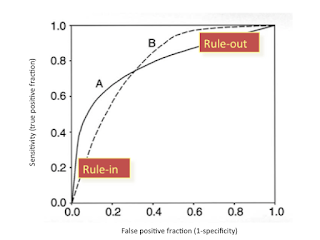Up By Their Bootstraps: Online Learning in Artificial Neural Networks for CMP Uncore Power Management
by Jae-Yeon Won, Xi Chen, Paul Gratz and Jiang Hu, from Texas A&M University and Vassos Soteriou from Cyprus University of Technology
This paper is focusing on the power management of un-core structure: Last-Level Cache (LLC) and Network-on-Chip (NoC). The method is using online learning ANN and assisted by PI control. They compare the offline/online ANN and many combination of different optimization method. Overall, they reduce the energy-delay product of uncore system by 27% versus state-of-the-art methodologies.
Motivation of this paper:
1. The non-core (uncore) structure also consume lot of energy in modern CMP since the number and communication between cores increasing.
2. Most of previous core power management focused on either core DVFS or DVFS domain partitioning around cores and merely including a slice of the uncore.
3. In reality, the applications often have abrupt changes, which cannot be captured by rule-based controller like PI (Proportional Integral).
Major points in this paper:
1. An ANN-based, PI-assisted online uncore power management is proposed. It can achieve 27% energy-delay product reduction for uncore system, and the performance degradation is less than 3%.
2. A offline ANN is also designed and analyzed, which is less effective than the online ANN (with PI-assisted).
3. the overhead of online ANN is demonstrated insignificant and incremental power is 0.32% of total CMP power.
Strength:
1. This paper focus on another power consumption domain in SoC, which is un-core structure (shared cache, NoC and etc. ). The proposed online ANN is demonstrated effective and cheap.
2. They overcome the weakness of ANN "online training to different applications" by feedback adaptation and self-sharpening. Both method increases the speed of ANN adapting to the current application requirement.
Weakness:
1. 2 key background is missing: a) why uncore power consumption is predictable, b) for abrupt change application, why PID control doesn't work (D for derivative, which is exactly handling the abrupt change).
2. The paper gives conclusion of uncore system energy-delay consumption is reduced by 27%. However, the paper doesn't mention the proportion of uncore power consumption and entire chip power consumption.
3. The model of ANN is chosen by experience (mentioned in paper), which can be demonstrated by comparing other configuration. The ANN also take past m intervals (then m*n inputs), which can be improved by RNN with m length memory.
4. Figure 7 shows the effect of different gain to the ANN learning comparing with PI controller. However, for the purpose of this paper, the ANN should provide better prediction rather than close to PI result.
Overall, this paper provides a effective method for ANN-PI online uncore PM method, but details requires more demonstration.
Minjun Wu
02/28/2019
This paper is focusing on the power management of un-core structure: Last-Level Cache (LLC) and Network-on-Chip (NoC). The method is using online learning ANN and assisted by PI control. They compare the offline/online ANN and many combination of different optimization method. Overall, they reduce the energy-delay product of uncore system by 27% versus state-of-the-art methodologies.
Motivation of this paper:
1. The non-core (uncore) structure also consume lot of energy in modern CMP since the number and communication between cores increasing.
2. Most of previous core power management focused on either core DVFS or DVFS domain partitioning around cores and merely including a slice of the uncore.
3. In reality, the applications often have abrupt changes, which cannot be captured by rule-based controller like PI (Proportional Integral).
Major points in this paper:
1. An ANN-based, PI-assisted online uncore power management is proposed. It can achieve 27% energy-delay product reduction for uncore system, and the performance degradation is less than 3%.
2. A offline ANN is also designed and analyzed, which is less effective than the online ANN (with PI-assisted).
3. the overhead of online ANN is demonstrated insignificant and incremental power is 0.32% of total CMP power.
Strength:
1. This paper focus on another power consumption domain in SoC, which is un-core structure (shared cache, NoC and etc. ). The proposed online ANN is demonstrated effective and cheap.
2. They overcome the weakness of ANN "online training to different applications" by feedback adaptation and self-sharpening. Both method increases the speed of ANN adapting to the current application requirement.
Weakness:
1. 2 key background is missing: a) why uncore power consumption is predictable, b) for abrupt change application, why PID control doesn't work (D for derivative, which is exactly handling the abrupt change).
2. The paper gives conclusion of uncore system energy-delay consumption is reduced by 27%. However, the paper doesn't mention the proportion of uncore power consumption and entire chip power consumption.
3. The model of ANN is chosen by experience (mentioned in paper), which can be demonstrated by comparing other configuration. The ANN also take past m intervals (then m*n inputs), which can be improved by RNN with m length memory.
4. Figure 7 shows the effect of different gain to the ANN learning comparing with PI controller. However, for the purpose of this paper, the ANN should provide better prediction rather than close to PI result.
Overall, this paper provides a effective method for ANN-PI online uncore PM method, but details requires more demonstration.
Minjun Wu
02/28/2019

Comments
Post a Comment